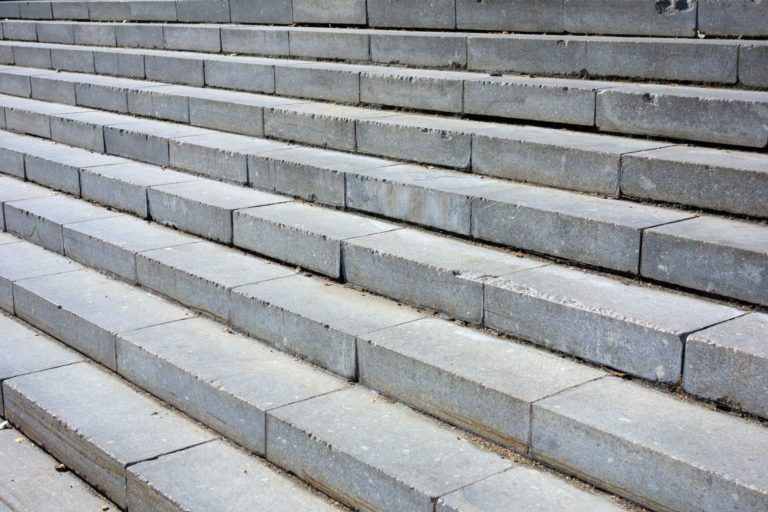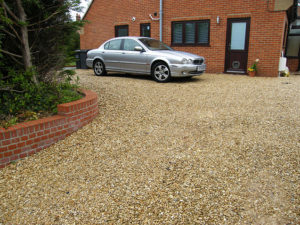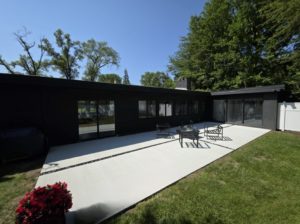Designing accessible concrete sidewalks and steps is crucial for creating inclusive environments that cater to people of all ages and abilities. Whether it’s for a residential neighborhood, a public park, or a commercial area, ensuring that these pathways are easy to navigate can make a significant difference in the quality of life for everyone. Accessibility in design isn’t just about compliance with regulations—it’s about fostering a community where everyone feels welcome and safe.
Concrete is a popular material for sidewalks and steps due to its durability and versatility. However, to make concrete pathways truly accessible, it’s essential to consider various design features and construction techniques. These elements can help minimize hazards, making it easier for individuals with mobility challenges, parents with strollers, and older adults to move around comfortably.
In this article, we will explore the key aspects of designing accessible concrete sidewalks and steps. From understanding accessibility standards to incorporating essential design features, selecting appropriate materials, and maintaining these structures over time, we’ll provide comprehensive insights to help you create inclusive and user-friendly pathways.
Understanding Accessibility Standards
Accessibility standards are guidelines that ensure sidewalks and steps are usable by everyone, including people with disabilities, older adults, and parents with strollers. In the United States, the Americans with Disabilities Act (ADA) provides specific requirements for public pathways. These requirements help make public spaces more inclusive.
Key elements of these standards include the width and slope of the pathways, the presence of tactile warning surfaces, and the placement of ramps and handrails. For example, sidewalks should be at least 36 inches wide to accommodate wheelchairs. Additionally, they should have a gentle slope of no more than 5% to ensure safety and ease of use. These guidelines help provide a smooth and level walking surface.
A unique aspect of accessibility standards is the emphasis on tactile warning surfaces. These are textured ground surface indicators that alert visually impaired individuals to changes in the walking path, such as street crossings or the presence of steps.
Being aware of these standards is the first step in designing sidewalks and steps that are accessible to everyone. Knowing what to look for and incorporating these guidelines into your construction plans will ensure that your pathways are safe and inclusive.
Design Features for Safety and Ease of Use
When designing accessible concrete sidewalks and steps, specific features can significantly enhance safety and ease of use. These features make the pathways more navigable for people of all ages and abilities, from toddlers to seniors.
1. Smooth Surfaces: Ensure that the concrete surfaces are smooth and free of cracks. Uneven or broken surfaces can be tripping hazards and difficult for wheelchairs to navigate. Regular inspection and maintenance can help keep surfaces smooth.
2. Handrails and Ramps: For steps, installing sturdy handrails provides support for those who need it. Additionally, incorporating ramps alongside steps ensures that people using wheelchairs or strollers can navigate the space easily. Ramps should have a slope no steeper than 1:12.
3. Adequate Lighting: Proper lighting is essential for safety, especially at night or in low-visibility conditions. Ensure that pathways are well-lit to help prevent accidents and make it easier for everyone to see where they are going.
4. Non-Slip Surfaces: Applying non-slip coatings or treatments to the concrete can help prevent slips, especially in wet conditions. This is particularly important for areas that may get slick from rain or snow.
5. Clear Signage: Clearly marked signs can help guide individuals, particularly those with vision impairments or cognitive disabilities. Use large, easy-to-read fonts and consider including Braille on signage where applicable.
By considering these design features, you’ll make your sidewalks and steps safer and more functional for everyone. Integrating these elements into your project will promote a more inclusive community, ensuring that everyone can move around comfortably and safely.
Materials and Construction Techniques
Choosing the right materials and construction techniques is vital for building accessible concrete sidewalks and steps. The goal is to ensure durability, safety, and ease of navigation for all users. Concrete is a preferred choice because of its strength and versatility, but certain practices can enhance its performance.
1. High-Quality Concrete Mix: Using a high-quality concrete mix ensures longevity and reduces the risk of cracks and surface deterioration. This mix should have appropriate water-cement ratios and be suitable for the local climate.
2. Smooth Finishing: Pay attention to finishing techniques to create a smooth, even surface. A broom finish can add a slight texture to prevent slips while still being smooth enough for wheelchair use. Avoid deep grooves that could become tripping hazards or impede mobility aids.
3. Expansion Joints: Properly placed expansion joints allow the concrete to expand and contract with temperature changes, reducing the likelihood of cracks. These joints should be placed at regular intervals and be well-maintained to prevent trips and falls.
4. Reinforcement: Using rebar or wire mesh in the concrete can add extra strength, reducing the risk of cracking. This reinforcement is particularly important in areas that experience heavy traffic or harsh weather conditions.
5. Drainage Solutions: Effective drainage is essential to prevent water accumulation on sidewalks and steps. Incorporate slight slopes or drainage channels to guide water away from the pathways, reducing slip hazards and preventing water damage.
These materials and techniques help create accessible, durable, and safe concrete sidewalks and steps. Using these methods will make your pathways reliable and user-friendly for many years.
Maintenance Tips to Ensure Long-Term Accessibility
Regular maintenance is crucial to ensuring the long-term accessibility of concrete sidewalks and steps. Without proper upkeep, surfaces can become hazardous, undermining the efforts put into their design and construction.
Routine Inspections: Conduct regular inspections to identify any cracks, uneven surfaces, or other issues. Seasonal changes and daily wear can lead to damage that, if left untreated, could pose risks to users. Addressing problems early will extend the lifespan of the pathways.
Prompt Repairs: Small cracks and minor damage should be repaired promptly to prevent them from worsening. Use appropriate concrete patching materials to fill cracks and smooth out uneven surfaces. Keeping up with minor repairs avoids larger, costlier fixes down the line.
Cleaning: Keeping sidewalks and steps clean is vital for safety. Remove debris, leaves, and dirt regularly, especially in high-traffic areas. For non-slip surfaces, make sure the texture remains effective by removing buildup that can make the surface slick.
Snow and Ice Removal: In colder climates, snow and ice can create dangerous conditions. Use ice melt products that are safe for concrete and remove snow promptly to prevent slippery surfaces. Avoid using metal shovels that can scratch or damage the concrete.
Sealants and Coatings: Applying sealants or anti-slip coatings can provide an extra layer of protection. Sealants help prevent water infiltration and resist stains, while non-slip coatings enhance safety in wet conditions.
By following these maintenance tips, you’ll ensure that your concrete sidewalks and steps remain safe and accessible for everyone. Performing regular upkeep will also reduce the need for frequent major repairs, saving time and resources.
Conclusion
Designing accessible concrete sidewalks and steps requires careful consideration of various factors. From understanding accessibility standards to incorporating key design features, selecting the right materials, and maintaining the pathways, each step plays a vital role in creating inclusive and safe environments. Accessible pathways enhance the quality of life by ensuring that everyone, regardless of age or ability, can navigate public spaces comfortably and safely.
Taking the time to plan and execute these elements correctly will result in durable and user-friendly sidewalks and steps. A well-designed pathway system can stand the test of time and provide a reliable means of access for diverse community members.
For expert assistance with your Michigan home improvements, contact Lighthouse Exteriors. Our team is dedicated to creating accessible and durable concrete pathways. Reach out to Lighthouse Exteriors today to ensure your sidewalks and steps meet the highest standards of accessibility.







